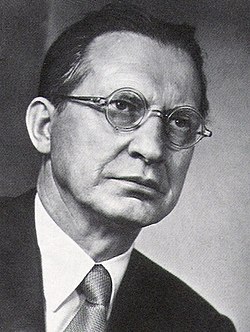De Gasperi VIII Cabinet | |
|---|---|
| 7th Cabinet of Italy | |
 Former Prime Minister De Gasperi | |
| Date formed | 16 July 1953 |
| Date dissolved | 17 August 1953 |
| People and organisations | |
| Head of state | Luigi Einaudi |
| Head of government | Alcide De Gasperi |
| No. of ministers | 17 |
| Member party | Christian Democracy |
| Status in legislature | One-party government |
| History | |
| Election | 1953 election |
| Legislature term | Legislature II (1953–1958) |
| Predecessor | De Gasperi VII Cabinet |
| Successor | Pella Cabinet |
The eighth De Gasperi government held office in the Italian Republic from 16 July to 17 August 1953, a total of just 32 days. It was the first government of the Republic to fall at its inaugural Parliamentary vote of confidence, having been submitted to Parliament by President Luigi Einaudi. [1]
It is one of the most short-lived governments in Italian history.
